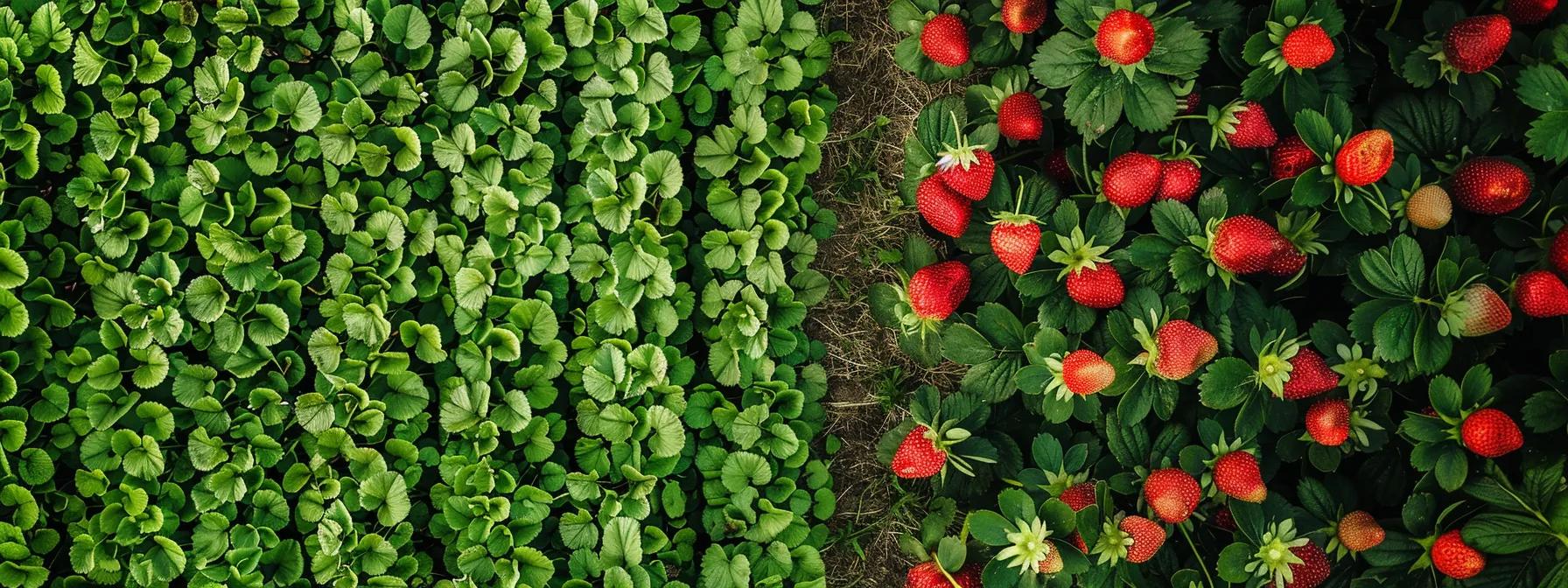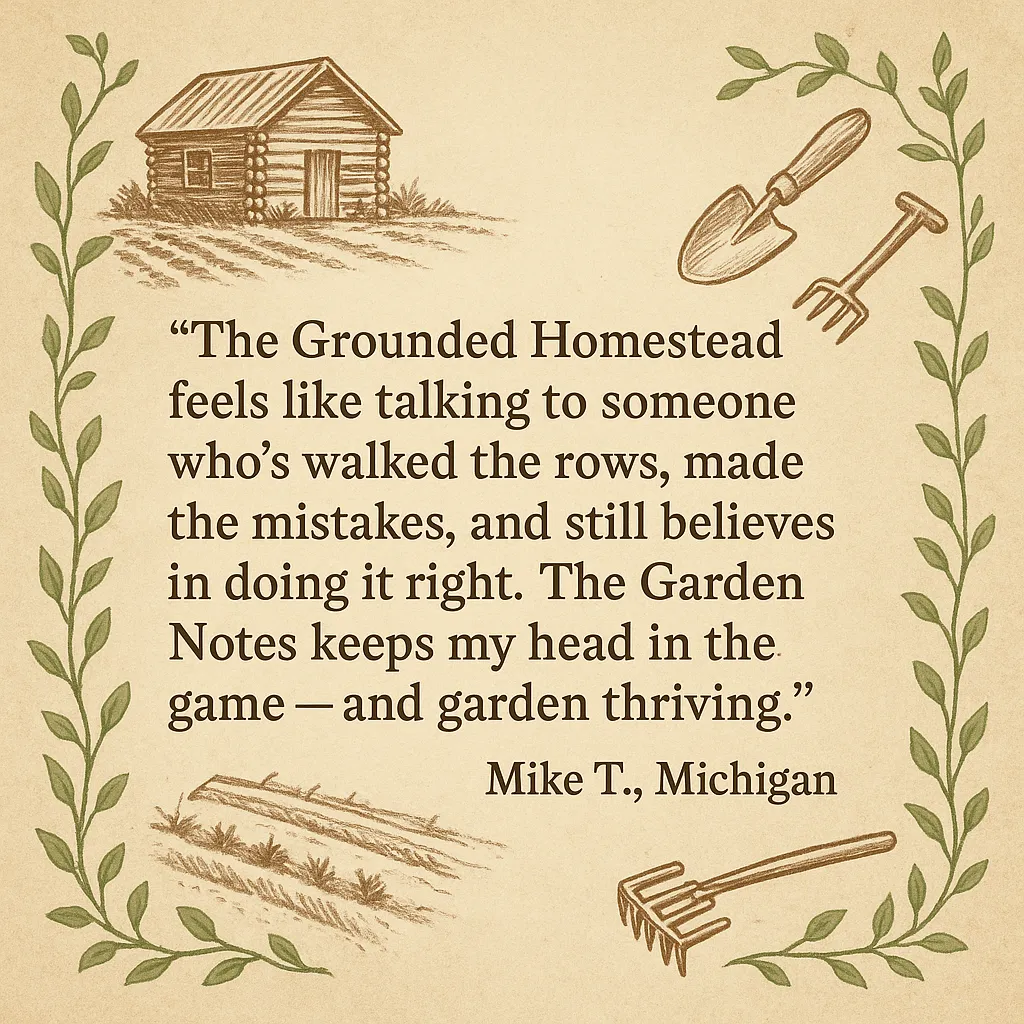
Wild Strawberries vs. Cultivated: Should You Grow Fragaria vesca?
Wild Strawberries vs. Cultivated: Should You Grow Fragaria vesca?
There was a trail behind my childhood home that wound between the pines and the wild edges of Grandma’s land. One summer, just off that path, I spotted a patch of tiny berries no bigger than my fingernail. They looked like strawberries, but smaller. I picked one, popped it in my mouth—and stopped in my tracks.
It was sharp. Sweet. Floral. Like a berry turned up to eleven. I’d never tasted anything like it from our raised beds or grocery cartons.
Turns out, I’d found wild strawberries. And years later, when I started building my own homestead, I found myself coming back to them—not just for their flavor, but for their toughness, their beauty, and the quiet way they work with nature instead of against it.
So here’s the question: Should you grow wild strawberries instead of—or alongside—cultivated ones?
Let’s dig in.
What Are Wild Strawberries, Really?
There are two main types of strawberries most folks lump under “wild”:
Fragaria vesca — also known as alpine or woodland strawberry, native to Europe and parts of Asia
Fragaria virginiana — the true North American wild strawberry
Both are perennial, low-growing, and smaller than the cultivated Fragaria × ananassa you’ll find at the garden center.
But don’t let size fool you. What they lack in bulk, they more than make up for in flavor, resilience, and ecological benefit.
Here’s a quick comparison:
Type Flavor Size Spread Hardiness Pollinator Value Yield Fragaria vesca Sweet + floral Small Moderate runners Zones 4–8 High Low Fragaria virginiana Tart + intense Very small Aggressive runners Zones 3–8+ Very high Low–Moderate Fragaria × ananassa Mild + juicy Large Controlled Zones 4–9 Moderate High
Don't Confuse With This:
If you see a similar plant with yellow flowers and dry, tasteless fruit, that’s mock strawberry (Duchesnea indica). It’s a lookalike that offers no flavor and minimal wildlife value.
Grandma used to say, “If the birds won’t touch it, you probably shouldn’t either.”
Fragaria vesca vs. Fragaria virginiana
🟢 Fragaria vesca
This is the alpine or woodland strawberry often found in European seed catalogs. The fruit is mild but intensely sweet, almost candy-like. It grows neatly with less aggressive runners and thrives in partial shade. If you’re looking for tidy, flavorful, and fragrant—this is your go-to.
🔴 Fragaria virginiana
This rugged native covers much of North America. It’s incredibly cold-hardy (Zones 3–8+) and spreads fast. The fruit is smaller and more tart, but it supports native bees, butterflies, and birds in a big way.
If you live in the Northern U.S. or Canada and want a native groundcover that earns its keep, F. virginiana may be your pick.
The Benefits Beyond the Berry
Wild strawberries don’t just feed you—they feed your land.
🐝 Pollinator Support
These plants bloom earlier and longer than their hybrid cousins, giving native bees a critical food source in spring.
🌱 Groundcover & Erosion Control
Their dense, low growth helps hold soil on slopes and suppress weeds naturally—especially F. virginiana, which spreads aggressively if allowed.
🌾 Wildlife Value
Songbirds, turtles, and small mammals love the fruit. You’re not just growing for yourself—you’re building a micro-ecosystem.
Tip: Tuck them along orchard paths or slope borders. They fill in quietly and ask for very little.
How to Grow Wild Strawberries (Without Losing Them to the Weeds)
🌱 Starting from Seed
Stratify seeds: Place in moist soil in the fridge for 3–4 weeks
Start indoors in early spring
Transplant once true leaves form and soil warms
It’s slow going, but rewarding.
🍓 Propagating by Runner
Best done early spring or fall
Gently press rooted runners into new soil beds
Water in and mulch lightly
🌤 Site Preferences
Partial sun is ideal—woodland edge conditions
Loamy, well-draining soil with leaf mold or compost
Mulch with pine straw or shredded leaves
🐛 Pests & Disease
These plants tend to be hardier than hybrids:
Less crown rot and fungal issues
Fewer pest problems, especially in native soil
Still avoid soggy conditions (especially in southern zones)
Tailoring by Zone
USDA Zone Notes Zone 3–4 Full sun, protect with mulch in winter, consider F. virginiana Zone 5–6 Mix of sun and shade, both species thrive here Zone 7–8 Part-shade, extra mulch to retain moisture, favor F. vesca
Taste Notes and Kitchen Use
Let’s be clear: wild strawberries aren’t a harvest crop. They’re a specialty flavor.
But the flavor is intense—floral, sweet, and complex. You don’t need a basket to enjoy them.
Try This:
Wild Strawberry Honey: Mash berries with honey and a dash of lemon, spread on sourdough
Simple Syrup: Infuse with sugar and water for cocktails or iced teas
Frozen into Ice Cubes: For herbal tea or lemonade
Tossed over Yogurt: A small handful goes a long way
If you get enough at once, try wild strawberry vinegar or jam—just don’t expect pints.
Should You Grow Them?
Yes—if you’re in this for flavor, diversity, and ecosystem support.
Grow them if you:
Want edible native groundcover
Love unusual flavors
Have space in borders, beneath trees, or woodland edges
Care about pollinators and low-input gardening
Skip them if:
You need high production
You want rows of uniform berries
You can’t control spreading (especially with F. virginiana)
Why I Grow Them:
I plant wild strawberries at the margins—where nothing else quite fits. They reward patience, fill in quietly, and remind me that food doesn’t have to be fussy to be good.
Spreading Beauty: Using Wild Strawberries as Living Carpet
These plants make a stunning edible groundcover—soft underfoot, helpful to pollinators, and surprisingly low maintenance.
To encourage controlled spread:
Use underground edging (metal or stone)
Cut runners in late summer
Interplant with other natives: yarrow, bee balm, wild thyme
Think of it like a living mulch you can snack on.
Conclusion: The Berry That Asked for Nothing
That wild patch I found as a kid? No one planted it. It grew where it wanted, gave what it had, and kept coming back every year.
Sometimes the best plants on a homestead aren’t the ones you buy. They’re the ones that meet you where you are.
So if you find a wild strawberry growing at the edge of your path—maybe don’t pull it. Maybe give it space, water, and a little mulch.
You might be surprised what it gives back.
Looking for more professional guidance & homesteading resources?
Explore our trusted guides to learn more about growing healthy food, managing your land, and building lasting systems for your homestead. Whether you're looking for planting tips, seasonal checklists, or natural solutions that actually work—we’ve got you covered.
Start with these helpful reads:
Everything to know about Strawberries:
Start with Strawberries: Ground Your Garden with Fruit that Grows Back
6 Common Strawberry Plant Diseases and How to Treat Them Naturally
The 6 Pests That Wreck Strawberry Crops—and How to Beat Them Naturally
Beyond Straw: Choosing the Right Mulch for Every Strawberry Bed
Runner Management 101: Multiply Your Strawberry Patch with Purpose
Frost, Flood, and Fungus: Protecting Strawberries in Extreme Weather
The Best Strawberry Varieties for Continuous Summer Harvests
Top 14 Practical Uses for Fresh Strawberries (Beyond Jam)
Start a U-Pick Strawberry Business (Even on 1 Acre)
How to Fertilize Strawberries for Yield, Flavor, and Runner Control
Strawberries in Small Spaces: Balcony, Border, and Vertical Growing Techniques
The Complete Guide to Propagating Strawberries: Growing Strawberries from Seed


Facebook
Instagram
X
Youtube